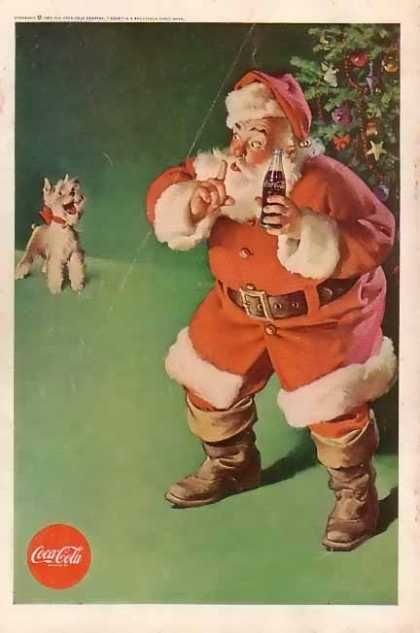Santa Claus Imagery Through the Ages
“’Twas the night before Christmas, when all thro’ the house, Not a creature was stirring, not even a mouse; The stockings were hung by the chimney with care, In hopes that St. Nicholas soon would be there”.
– ‘A Visit from St. Nicholas’ (1823), attributed to Clement Clarke Moore
He has many names in different countries and cultures, but the gift-giver commonly called Santa Claus is loved throughout the Christmas-celebrating world. Santa Claus as we currently know him is the product of several centuries’ worth of Christmas tradition, literature, art, and advertising, and he has predecessors in religion, culture, and folk lore. So, how did he become who he is today?
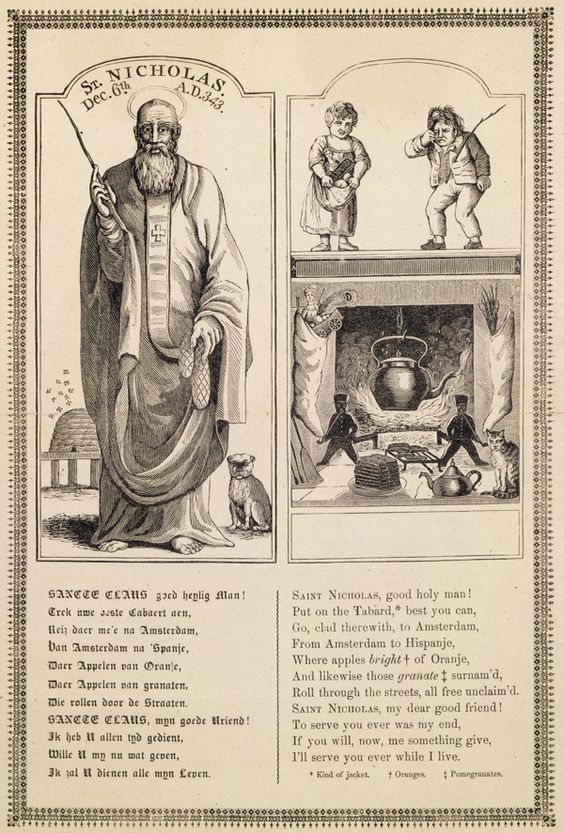
Saint Nicholas (270-343), Bishop of Myra, was an early Christian forerunner of Santa Claus. Known for his protection of children and generosity to the poor, Nicholas became associated with gift giving in many European nations as early as the twelfth century. He originally gave gifts on St. Nicholas’s Day (December 6th), but the tradition eventually moved to Christmas Day. Images of Saint Nicholas have appeared everywhere from Russian icons to stained glass windows in churches, medieval manuscript illuminations, and several centuries of paintings, drawings, and prints. His appearance and clothing differ greatly from work to work, though he has a number of attributes, including his bishop’s miter (hat) and crozier (staff with curled end). This print of Saint Nicholas was made in 1810 by American illustrator Alexander Anderson and commissioned by New York Historical Society founder John Pintard. In early-nineteenth century New York, Pintard was responsible for promoting Dutch traditions, including celebrations of Saint Nicholas’s (Sinterklaas’s) Day. This image of Saint Nicholas lacks many of his typical attributes but is still recognizable as a saint through his halo and the cross on his robes. Looking at the evolution of Saint Nicholas over time, it seems as though artwork depicting him has evolved to look more like Santa Claus, not the other way around.
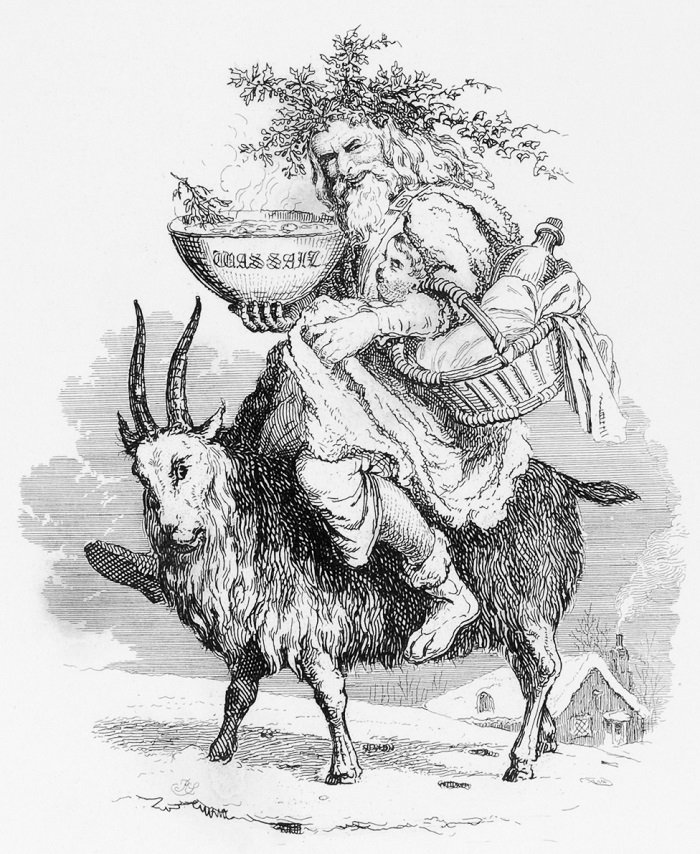
On old English tradition, Father Christmas has personified Christmas cheer and merrymaking since at least the fifteenth century, but may have origins in older pre-Christian celebrations, and appeared in literature and holiday celebrations throughout the next several centuries. Nineteenth-century illustrations of Father Christmas show him as an elf-like figure wearing long robes with holly in his hair and a mischievous expression on his face. Much as is the case with Saint Nicholas, however, Father Christmas did not originally have the same costume or appearance from one work to another. In this image by English illustrator Robert Seymour (1798-1836), he rides a goat and carries a bottle of wine, bowl, and small child. He calls to mind Dionysus, the Greek god of wine and a fellow lover of good times, which makes it no surprise that he was frowned on during the Reformation. This illustration appeared in Thomas Kibble Hervey’s The Book of Christmas, a collection of Christmas traditions and lore. Father Christmas is also known as the Ghost of Christmas Present in Charles Dickens’s 1843 classic A Christmas Carol, illustrated below by John Leech (1817-1864). As can be seen from his green robes, the Father Christmas/Santa Claus character was not yet associated with the color red.
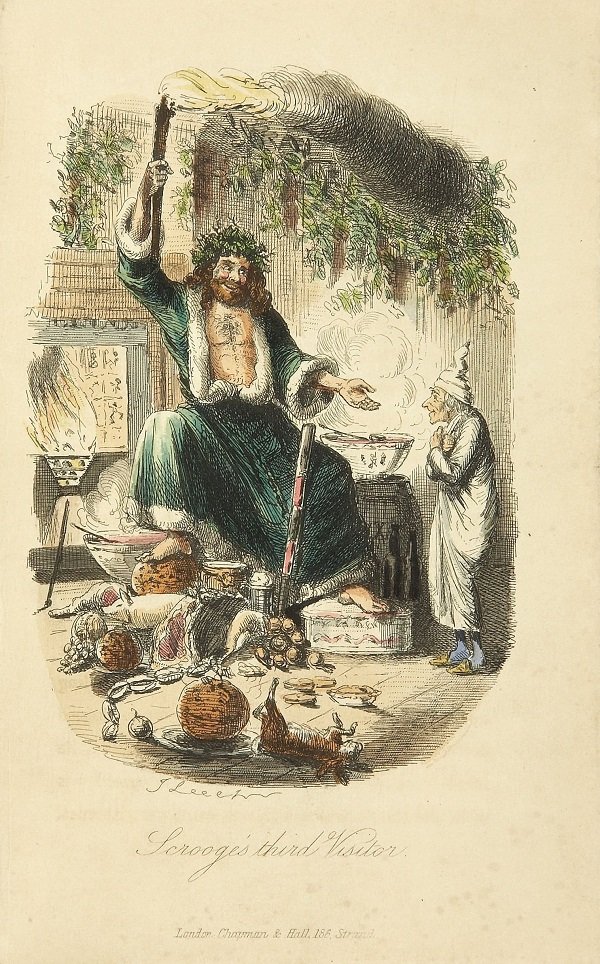
The Santa Claus we are familiar with today, though he was still called by a variety of different names, began to take shape in the nineteenth century, particularly in America. Credit is due to two literary works, Washington Irving’s Knickerbocker’s History of New York (1809), a satirical take on Dutch customs in New York, and the poem ‘A Visit from St. Nicholas’ (1823), attributed to Clement Clarke Moore and now commonly known as “Twas The Night Before Christmas”. Although neither actually uses the name “Santa Claus”, they did much to promote him and some of his attributes. Inspired by these works, artists began to illustrate him for periodicals and popular culture around the same time.
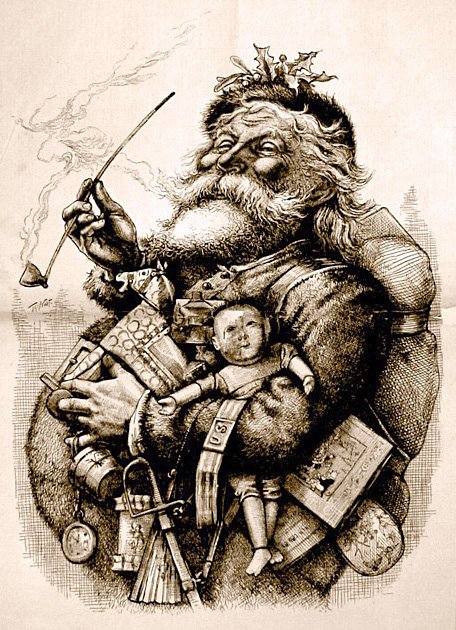
The first artist to significantly contribute to the modern Santa Claus image was Thomas Nast (1840-1902). An illustrator for Harper’s Weekly, Nast is also responsible for creating enduring American symbols such as Uncle Sam and satirical cartoons about American politics. Nast’s first Santa Claus appeared in Harper’s Weekly in 1863, where he wore an American flag suit in a Civil War-related illustration. His most famous Santa, for Harper’s Weekly in 1881, shows the profile of a portly fellow with a short beard, long-stemmed pipe, and armful of toys. The character is still easily recognizable to us today. Santas following the same general conventions as Nast’s appeared on magazine covers and advertisements over the next several decades. For example, he appeared in some inventive White Rock sparkling water ads around the turn of the century, such as this biplane-flying Santa.
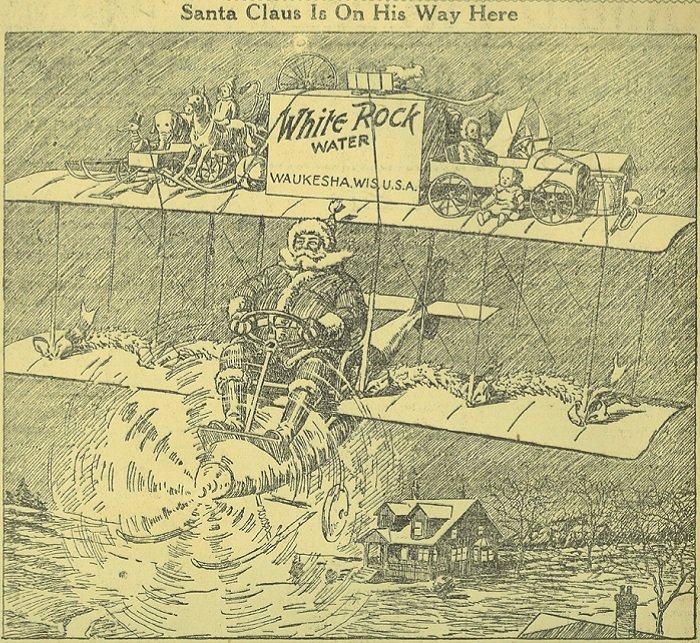
Beloved American illustrator Norman Rockwell (1898-1978), along with his slightly-older contemporary Joseph Christian Leyendecker (1874-1951), made the modern Santa Claus a classic. During the first half of the twentieth century, Saturday Evening Post covers by these two artists presented very lifelike Santas. Leyendecker’s Santas were fleshy and gently comical, often shown interacting with children and animals, while Rockwell’s were relatable and realistic. On Rockwell’s 1926 cover (shown below), Santa consults a globe and book of “Good Boys”, presumably determining his Christmas Eve flight plan. He seems more like a grandfather or elderly professor than the elf-like Father Christmas or Nast’s symbolic figure. It’s interesting to notice that Rockwell’s Santa wears different red-and-white outfits, not always the now-traditional suit; the variety of clothing contributes to the realism of Rockwell’s images. In this particular illustration, he has a halo in reference to his ancestor Saint Nicholas.
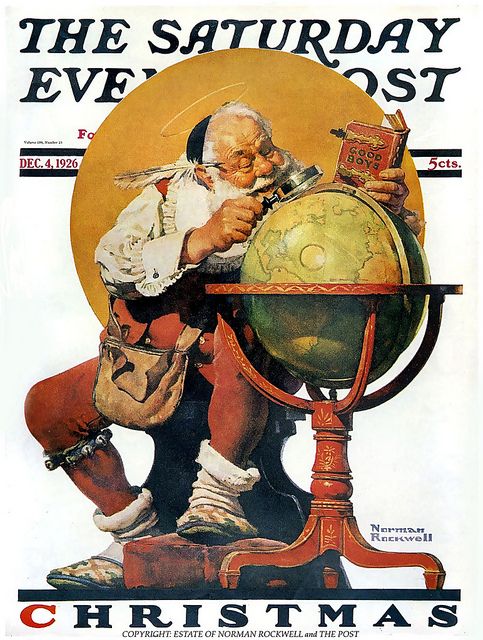
In the 1930s, the Coca-Cola Company turned to Haddon Sundblom (1899-1976) to make Santa Claus the mascot of their Christmastime advertisements. Sundblom painted chubby, cheerful, Coke-drinking Santas from 1931 to 1964. Like that of Rockwell, Sundblom’s Santa Claus is quite lifelike and partially based on the artist’s own appearance. Like Leyendecker’s, these illustrations show Santa in a variety of charming situations, such as encountering a curious dog and being spotted by children as he delivers presents on Christmas Eve. Some people believe that Sundblom and Coca-Cola single-handedly created Santa Claus, with his red-and-white suit referencing the company’s logo, but as we have seen, this is not the case. However, there’s no doubt that the Coca-Cola advertisements went a long way to popularizing Santa Claus’s now-familiar appearance, from his fur-trimmed red suit and hat to his full beard, ruddy cheeks, and glasses. This image of Santa Claus has become a classic, and his appearance in Christmas popular culture will likely follow this same formula for many years to come.
